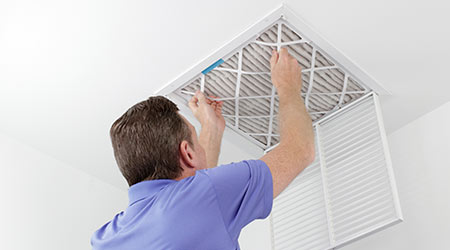Understanding the Standards of IAQ
Strategies for matching filters to applications to improve indoor health
Tools of the trade
Two standards — the National Ambient Air Quality Standard (NAAQS) and California Ambient Air Quality Standard (CAAQS) — define clean air. California’s standard is considered more stringent and identifies the following as pollutants that endanger the health:
• particulate matter
• sulfur dioxide
• ozone
• visibility-reducing particulates
• nitrogen dioxide
• lead
• sulfate
• hydrogen sulfide
• carbon monoxide
• vinyl chloride.
The NAAQS states that maximum permissible ozone concentration is an average of 0.075 parts per million (ppm) over any eight-hour period. The facility has met the standard when the three-year average of the annual fourth highest daily maximum eight-hour ozone concentration is less than or equal to 0.075 ppm.
Tools and technology for measuring mold, temperature, air flow, carbon dioxide, and airborne particles are effective if the comparison between current readings are at or below the related standard. When determining if tools and technology meet the standard, managers must determine which standard is applicable for the authority having jurisdiction (AHJ). In cases of federal facilities, the NAAQS might be the AHJ, while state schools might be under the jurisdiction of the state AHJ, and still others might be under local AHJ.
Thomas A. Westerkamp is a maintenance and engineering management consultant and president of the work management division of Westerkamp Group LLC.
Related Topics:














